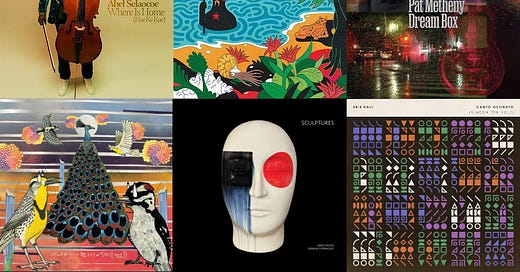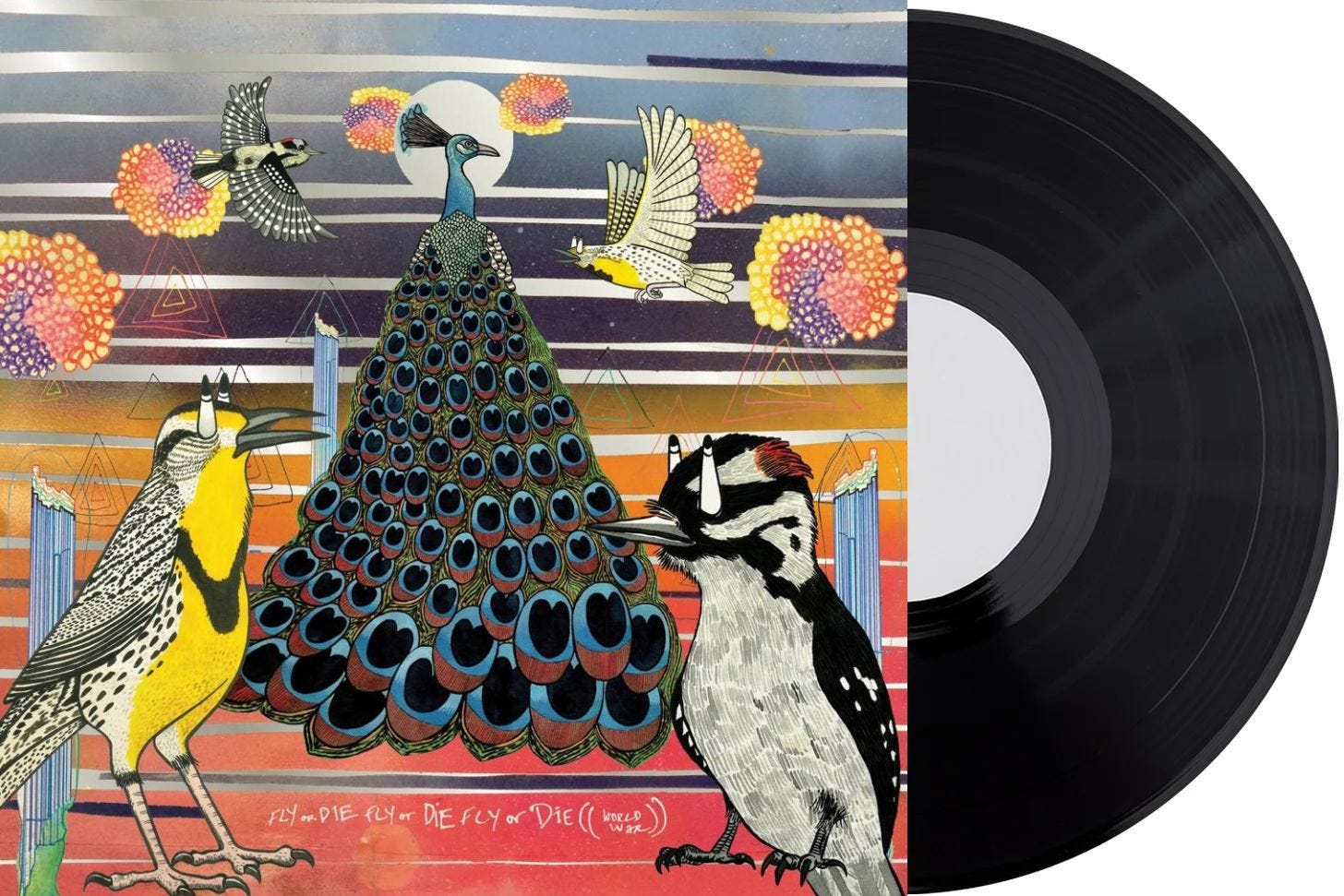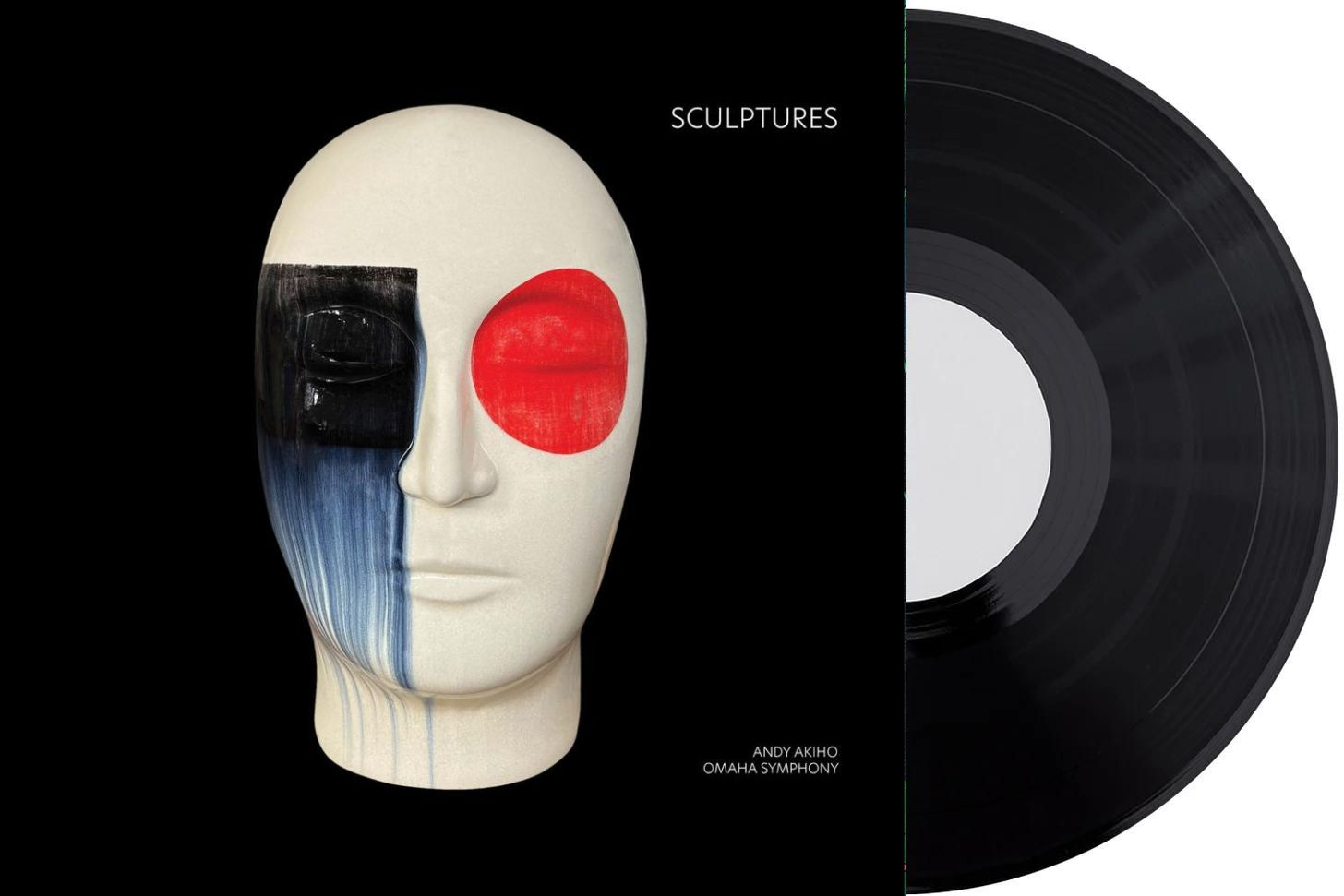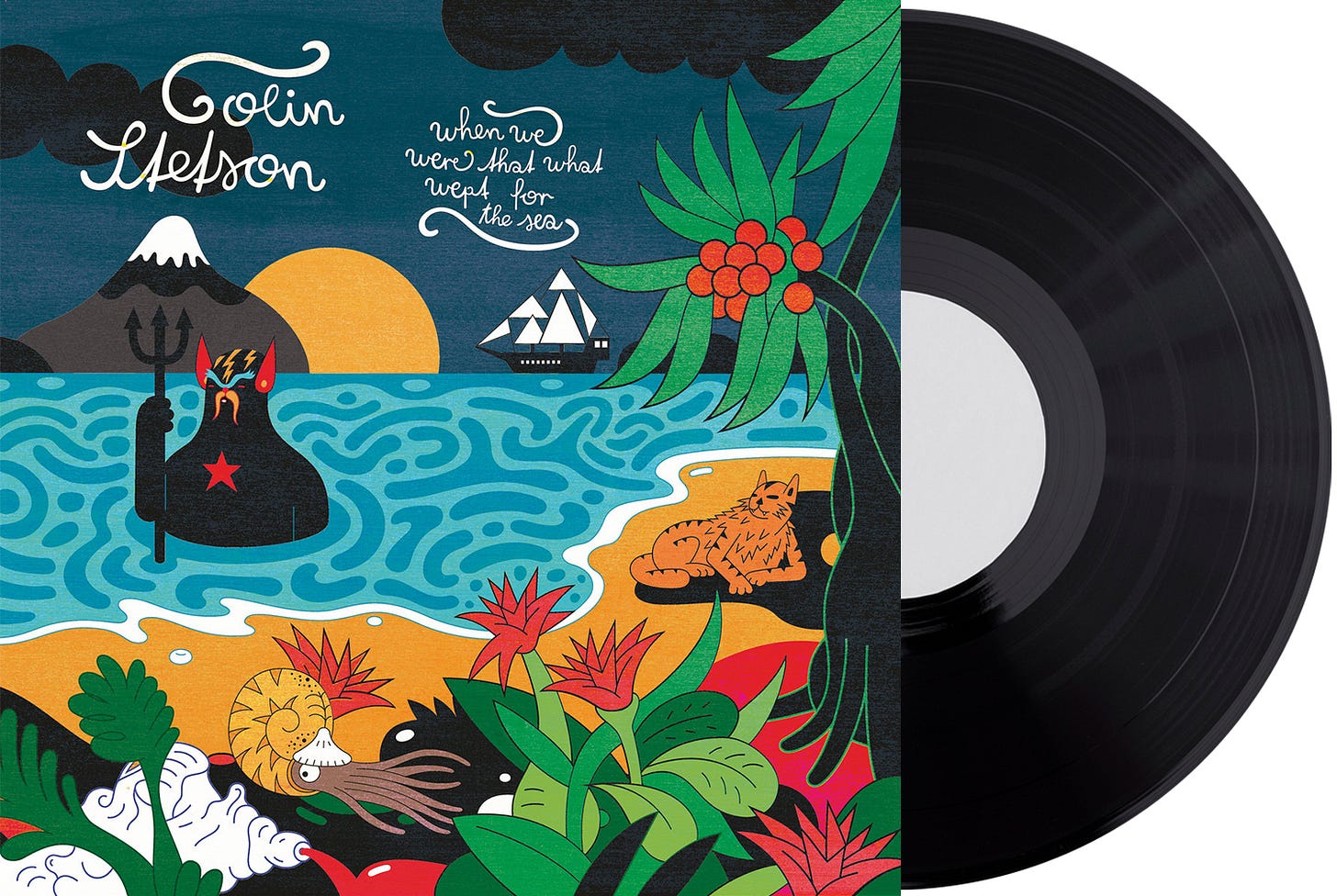2023 felt like a good year for music. I encountered many beautiful, challenging, and intriguing albums. My expectations were, however, admittedly low: the arts have not truly recovered from the pandemic; Russia continues to invade Europe through Ukraine; the Middle East is ablaze with war and genocide; arts education is being cut; machine learning is mass producing machine music; Spotify is an increasingly dysfunctional muzak jukebox; governments lack the desire or means to fund artistic projects. At times like this music matters more than ever, and the fact that good music managed to fight its way through indicates solid grounds for hope, though its resilience should not be treated as inevitable.
I created this post to shine a light on people and projects that I believe deserve attention. Some of the recommended albums have inspired me for weeks or months on end, and I am sure they will continue to do so for years to come. I hope they inspire you too.
One album that transported me was Erik Hall’s home recording of Canto Ostinato. It is a composition so beloved in the Netherlands, the home of its late composer Simeon ten Holt, that people have tattoos of its score and have given birth to the music! That it is still not fully recognised as a seminal composition raised the question of whether European minimalist composers have been unfairly overshadowed by their American counterparts.
Concerning American composers, Andy Akiho released a record in collaboration with the Omaha Symphony that I felt expresses some of the tension of our times. The series of compositions are inventive, diverse, and cathartic. Music that is fundamentally at odds with an age of distraction: it is demanding, uneasy listening, that requires and rewards attention.
Finally, I look forward to adding an album of my own next year. Created largely in the deep of night when my young kids were sleeping, I surprised myself by writing a series of electronic music compositions. I had no plan to do this, ever, let alone this year.
I look forward to sharing it with you, ideally in early 2024.
I hope you enjoy some of the music below, and thank you for continuing to read and share these posts. The list has almost doubled in readership since I started. If you would like to help double it please share it with a friend.
Simeon Ten Holt / Canto Ostinato
This new interpretation of Simeon Ten Holt’s most famous work Canto Ostinato offers an original take on this seminal piece of Dutch composition. Written for four keyboards, the American pianist Erik Hall recorded a unique version in his home studio using a felted Steinway grand piano, a Rhodes electric piano, and a Hammond M-101 organ. This combination of instruments provides a contemporary timbral palette that feels more informal than the purely grand pianos used in some other interpretations.
At points, you can tell it is overdubbed rather than performed by a group, but if anything, this adds charm to its DIY aesthetic. It is one person's vision, devotedly put together piece by piece over weeks and months. To fit on a single vinyl record its total length is just under an hour, making it significantly shorter than other versions, but providing the feel of a traditional album suited to home listening.
It is a reminder of what a good composition Canto Ostinato is, with its steady rhythm in 5 running throughout the piece as only the melody and harmony vary, somewhat reminiscent of a Bach prelude where a single musical element is isolated to draw greater attention to it.
My highlight track
Jaimie Branch / Fly or Die Fly or Die Fly or Die ((world war))
Tragically, this is jazz trumpeter Jaimie Branch’s second and final album, since her early death in 2022. It is as interesting and innovative as the album artwork suggests. Few people manage to make the jazz trumpet sound original given its rich and diverse history, but her sharp and decisive tone is distinctive and enticing. The political nature of the artist is present in the music with a confident and bombastic style.
Her bandmates wrote the following in the liner notes for the record.
jaimie never had small ideas. She always thought big. The minute you told her she couldn’t do something, or that something would be too difficult to accomplish, the more determined and focused she became. And this album is big. Far bigger and more demanding — for us, and for you — than any other Fly or Die record.
My highlight track
Pat Metheny / Dream Box
Despite having listened to Pat Metheny’s music my entire life I only saw him perform for the first time two years ago. At 66 he was as energetic and virtuosic as someone a third of his age. Greeted in Valencia, Spain, by a sold-out and appreciative audience, the band’s tireless and mesmeric performance earned them multiple standing ovations. Little did I know, during this tour, Metheny was also busily sorting through some guitar recordings stored on an old hard disk, a compilation of which comprises the album.
In one sense, it is nothing new. It is Pat Metheny being Pat Metheny in his inimitable and excellent way. However, there is a distinct maturity in his sound, since if there is a hang-up I have about some of his earlier recordings it is their occasional straying into excessive sentimentality. This is the expression of a solitary, quieter self, documented through a series of musical diary entries. It is a beautiful record, that can be listened to again and again.
My highlight track
Andy Akiho / Sculptures
Andy Akiho is an artist who can get me to roll out of bed early to hear his latest release. The composer and steelpan player has developed a distinctive style that contains abrupt changes in subdivisions and the liberal use of implicit and explicit polyrhythms, creating a strangely pleasant sense of unease as one navigates his rapidly transformable musical reality.
I consider this his best composition and recording to date, though, like most of his music, it demands your full attention and multiple listens to fully appreciate. Inspired by the Japanese sculptor Jun Kaneko, the music vacillates between tender brass harmonies and a powerful and highly punctuated rhythmic tension, evocative of Taiko drumming.
Akiho’s challenging yet accessible music deserves a much larger audience. Despite being a fan for many years, I have yet to have the opportunity to hear a note performed live. Hopefully, this album will help change that.
My highlight track
Colin Stetson / When we were that what wept for the sea
I first encountered Colin Stetson playing at The Barbican in London, and was sufficiently impressed that he could hold his gigantic bass saxophone for an entire concert, let alone play such intense and demanding music. This album represents a rare case where I have enjoyed a record more than a live performance. It captures emotions with clarity and precision, intimately recording everything from the clacking of fingering of the sax keys to rapid inhalations.
Stetson has been writing film music for the last few years, providing him with a powerful sense of narrative that makes the record feel like a story, taking you on a journey that cannot be experienced through isolated tracks alone. He wrote this music in response to the death of his father; pain and loss can be felt intimately throughout, yet there exists some cathartic beauty in this journey of grief. It is a touching homage to a father, the unexplored capabilities of the saxophone, and a way of recording and composing unique to Stetson.
My highlight track
Kali Malone / Does Spring Hide Its Joy
Kali Malone is a composer and organist who relocated from the United States to Sweden at age 18, joining a thriving Stockholm music scene that includes the like-minded organist and minimal composer Ellen Arkbro. Rather than a novel with an intricate plot and cast of characters, Malone’s music evolves in a manner more akin to the subtle changes of the rising and falling of the sun. Written during the pandemic she describes the inspiration for her hour-long composition.
Like most of the world, my perception of time went through a significant transformation during the pandemic confinements of spring 2020. Unmarked by the familiar milestones of life, the days and months dripped by, instinctively blending with no end in sight… and all the while, the seasons changed and moved on without the ones we lost.
The composition is performed by a trio comprised of strings and electronics, with Stephen O’Malley on electric guitar, Lucy Railton on cello, and Malone on tuned sine wave oscillators. It is all recorded in deliciously fine detail, allowing one to experience the subtle changes of the composition’s gradual development.
My highlight track
John Coltrane / Evenings at the Village Gate
The happy surprise that a previously lost album by John Coltrane had been unearthed, set up expectations that did not lead to disappointment. This album represents another piece in the puzzle of one of the most prolific and enigmatic jazz musicians.
The two nights’ performances were spontaneously recorded at the live club to test the equipment, resulting in a trebly and thin sound that is far from perfect. Elvin Jones’s drumming is too high in the mix, Reggie Workman’s double bass is too low, and McCoy Tyner’s piano is at times almost inaudible. The band, however, are as fiery and charismatic as ever.
Elvin Jones’s sublime and thickly punctuated drumming sounds like rocks bouncing down a hill, especially when he solos in the final track Africa, while throughout the record Coltrane pushes the soprano sax to its limits with his quintessential screeching altissimo sounds. Fellow experimental horn player Eric Dolphy holds up well with the band, but there are moments that feel awkward. Coltrane sets up the track Impressions with a high-energy explosive solo, which Dolphy’s more mellow solo struggles to maintain in intensity. Yet this is a small complaint given that this new album documents two of the greatest reed players performing together at pivotal moments in their careers and jazz history.
My highlight track
Colin Currie Group / Music for 18 Musicians
Colin Currie’s group has in effect become the official performers of New York composer Steve Reich’s music. The group previously performed and recorded Reich’s longest composition Drumming in a manner that acts as a testament to the power of the interpreter. Their transformational version of the piece is, by Reich's own admission, the best recording out, there eliciting nuances and details in the music that the composer potentially did not perceive himself.
Fresh from a tour Currie’s group recorded Reich’s most famous piece Music for 18 Musicians at Abbey Roads Studios. This version does not transform the composition to the extent that Currie’s group did with Drumming, but it strikes me as the best interpretation of the piece to date — both in terms of the performance and recording. Slower in tempo than other versions, it gives the piece space to groove in a laid-back manner, in contrast to the somewhat frenetic pace of other interpretations. Abbey Roads Studio has lived up to its name, with a recording that is meticulously spatialised, with depth and clarity in the pianos and vibraphones that bring you closer to the performance.
My highlight track
Arooj Aftab, Vijay Iyer & Shahzad Ismaily / Love in Exile
It might be a cliché, but this album really does not fit a genre. For years I have followed Vijay Iyer who is a unique and fascinating jazz pianist, but in this album I discovered Arooj Aftab’s tender Urdu vocals and Shahzad Ismaily’s delicate bass playing. The trio requests listeners to:
(…) step inside its sense of time, to stretch out alongside these delightful and unhurriedly unfolding songs.
It is good advice given the album has been recorded in the manner of a live performance, flowing in lucid and unknowable ways, absent of the punctuation and demarkation of percussion. It demands a degree of attentive listening, and some decent speakers or headphones to follow Ismaily’s deep bass notes, but the reward is a contemplative state of being that is calm and reflective.
My highlight track
Abel Selaocoe / Where is Home (Hae Ke Kae)
Well, this breaks the rules as it was released in 2022. However as Liner Notes did not exist then, I cannot resist including it, as it is one of the best classical albums of the decade. I first experienced Abel Selaocoe’s music when he played live with percussionist Bernhard Schimplesberger at Kings Place in London. That night he memorably picked up his cello as if it were a microphone and sang into its resonating chamber, amplifying his deep reverberant melodies and demonstrating he is as fine a singer as he is a cellist.
The album features tracks of South African and Tanzanian music, as well as Baroque compositions from Giovanni Benedetto Platti and J.S. Bach in a manner that lacks any sense of gimmick or awkwardness. Selaocoe acts on this record as a powerful confluence of cultures, handled with a confidence that demonstrates he is one of the finest musicians alive.
My highlight track
Brìghde Chaimbeul / Carry them with us
A highlight of my year has been the discovery of the Scottish bagpipe player Brìghde Chaimbeul, who collaborated on Colin Stetson’s aforementioned album. Chaimbeul plays the smallpipes, a smaller bagpipe which offers a distinctive characteristic drone sound. On top of the drone sound, she repeats melodic patterns which gradually evolve, which are accompanied on various pieces by the saxophonist Colin Stetson. This album offers a contemporary take on Scottish folk music in a way that feels fresh and original.
My highlight track
















Always love your music recs - thanks Dom!
Thanks for curating this list Dom! I recently discovered Jaime Branch also and really dig her concept. Lots of stuff here I wasn't familiar with. Akiho is especially intriguing, for me. Look forward to listening more.